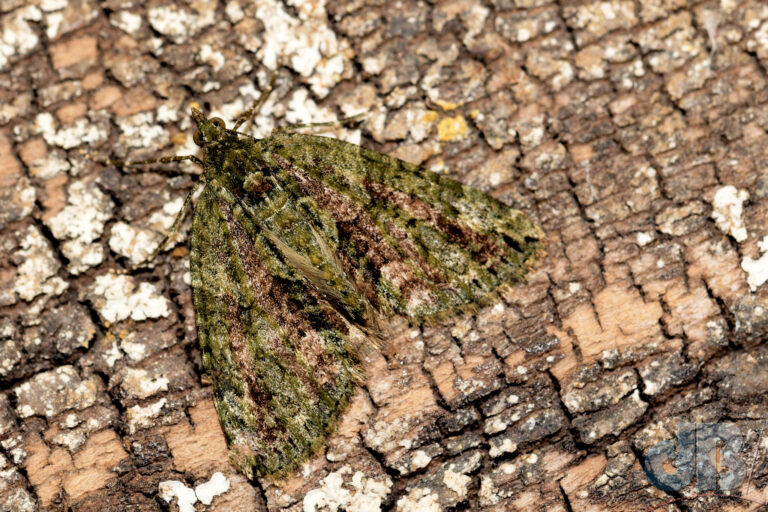TL:DR – It’s spring and at least one hibernating moth, the Red-green Carpet, has arrived in our garden so far this year
Lit up with my Heath trap again last night and despite the rain, but perhaps because it didn’t drop below 9 Celsius there was a small clutch of moths to ID and record this morning. Specifically, 2x Clouded Drab (new for the year), Common Quaker, Early Grey, 2x Hebrew Character, and a Red-green Carpet, also NFY.

The Red-green Carpet is usually on the wing in the Autumn, the males die, but the females can hibernate to lay eggs in the spring. To my eye, they generally look green with some spots and patches at this time of year, but the autumnal ones are more obviously green and red…ish.
The “carpet” part of its name refers not to the notion that its larvae eat carpets, rather than in the 1700s when species were first being classified and named, the early entomologists and indeed the Lepidopterists perceived the beauty of these creatures and equated their colourful patterns and markings as being like the luxury items carpets were at the time.
The Red-green Carpet moth is a beautiful and fascinating species of moth that belongs to the family Geometridae, which includes many other species commonly known as “carpet moths”. This moth is found throughout Europe, including the United Kingdom, where it is one of the most common species of carpet moth.
Like all Lepidoptera, the species undergoes a complete metamorphosis, with four distinct life stages: egg, larva, pupa, and adult. The eggs are laid on the leaves of the host plant, which can include a wide variety of deciduous trees, most commonly oak and rowan. The larvae, which are often called “inchworms” (US usage) because of their distinctive way of moving, measuring the earth…hence geometers undergo several moults before pupating. The pupa is a non-feeding, transformative stage in which the larva transforms into the adult moth. Finally, the adult emerges from the pupa and begins the cycle anew by finding a mate and the females laying eggs.